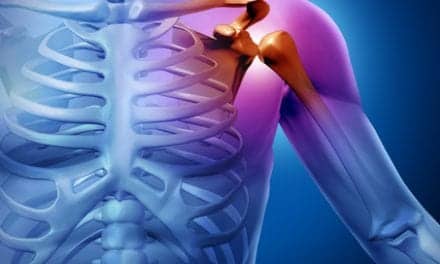Researchers from Hospital for Special Surgery (HSS) suggest a significant association exists between foot pain and knee or hip pain. The results, they note, advocate for a change in how patients with lower extremity pain are evaluated.
“Studying the interaction between the knee and the foot, or the hip and the foot is very important because it’s a kinetic chain,” says Rock G. Positano, DPM, MPH, director of the Non-Surgical Foot and Ankle Service, Joe DiMaggio Sports Medicine Foot and Ankle Center at HSS.
The kinetic chain, the notion that the body’s joints and segments have an effect on one another during movement, can play a key role in pain, notes a media release from HSS.
“The foot is the first part of the body that makes contact with the ground. Its primary function is a shock absorber. If the shock-absorbing capability of the foot is somehow altered or minimized, it’s going to affect other body parts,” adds Positano among the authors of the study, published recently in the Journal of the American Podiatric Association.
“The foot is also the foundation of the body,” he continues, in the release. “If the foundation is not sound, it could have a deleterious effect on the joints above the foot and ankle, namely the knee and the hip.”
In the study, the HSS team analyzed information from a database of 2,181 people who had participated in the NIH-funded Framingham Foot Study between 2002 and 2008.
The participants completed a questionnaire evaluating their foot pain, pain location (including side of pain) and severity, as well as whether they had experienced pain, aching or stiffness in the hip or knee, and the side of any reported pain. Per the results, 16% of participants reported bilateral foot pain, 6% right foot pain only and 5% left foot pain only. Slightly more women than men reported foot pain.
The researchers state in the release that foot pain was associated with bilateral and same-side knee pain in men and women. For example, men with right foot pain compared to those with no foot pain were five to seven times more likely to have pain in their right knee or in both knees.
Foot pain was also associated with hip pain on the same side in men. In women, bilateral foot pain was associated with hip pain on both sides, on the same side or on the opposite side.
When one is in pain, the researchers, theorize, one tends to modify his or her movements and postures, which can result in malalignment. A challenge for physicians, they state, is to develop a treatment plan that addresses these issues, too.
“The correlated and compensatory posture and movement theory may explain how multi-joint arthritis develops, as well as other abnormalities and associated pains that can result from overuse or trauma to one or more structures in the kinetic chain,” they write, in the release.
These findings, they continue, “advocate for a change in the paradigm of how patients with lower extremity pain should be evaluated clinically… In a world where medical imaging has come to the forefront of patient diagnoses and care, these results remind health care providers that the basic physical examination and patients’ history remain important in identifying pain and related patterns in patients.”
[Source(s): Hospital for Special Surgery, Science Daily]





